Nicolaus Copernicus
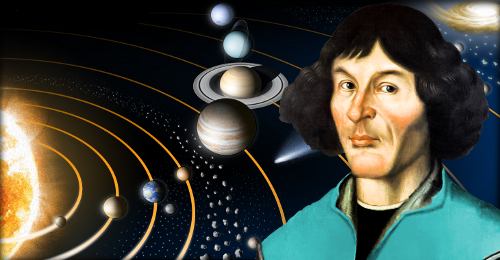
Lived 1473 to 1543.
By publishing his evidence that Earth orbits the sun, Nicolaus Copernicus relegated our planet’s status from center of the universe to just another planet. In doing so, he began the scientific revolution.Early Life and Education
Nicolaus Copernicus was born in the city of Torun, in the Prince-Bishopric of Warmia, northern Poland on February 19, 1473.His name at birth was Mikolaj Kopernik. At university he started calling himself the Latin form of his name, Nicolaus Copernicus.
Nicolaus was born into a wealthy family. He was named after his father, Mikolaj Kopernik, who was a prosperous copper trader. His mother, Barbara Watzenrode, also came from a wealthy, upper-class family of merchants. Nicolaus was the youngest of their four children.
When Nicolaus was 10 years old, his father died. Nicolaus’s nobleman uncle, Lucas Watzenrode, became his guardian.
In 1491, at the age of 18, Copernicus enrolled at the University of Krakow, where he studied astronomy, mathematics, philosophy, and the sciences. His main interests were reflected in the books he bought:
• Elements of Geometry by Euclid
• In Judgment of the Stars by Haly Abenragel
• Astronomical Tables by Alfonso X of Castile
• Astronomical and Mathematical Tables by Johannes Regiomontanus
In his final year at university Copernicus wrote his own observations on mathematics and astronomy. These he inserted into his personal copy of Johannes Regiomontanus’s book.
Advertisements
Copernicus in Italy
After four years at university Nicolaus Copernicus had not graduated. His uncle sent him to Bologna, Italy, to study canon law. His uncle, who had become Prince-Bishop of Warmia, hoped Nicolaus would return to become a canon in Warmia. It was a good church job with a salary for life.Copernicus was meant to spend three years in Italy studying the laws and regulations of the Catholic Church.
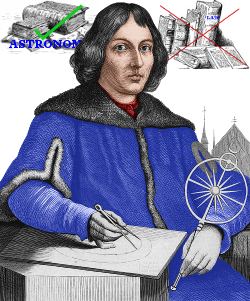
When he was studying to become a Doctor of Law, Copernicus spent more time on astronomy than law.
His uncle would have been displeased if he had known that his nephew preferred to spend his time studying astronomy and mathematics and learning Ancient Greek – many of the great astronomy works he wanted to understand were available only in Greek.
Copernicus did too little work on his law course and for the second time in his life failed to graduate with a degree. He did, however, add to his book collection: some law books, of course, plus some that had nothing to do with his official course, including:
• Cosmography by Claudius Ptolemy
• Summary of Ptolemy’s Almagest by Johannes Regiomontanus: this was a summary of Claudius Ptolemy’s great astronomical work, with additional notes by Regiomontanus
• Phenomena by Aratus of Soli: an ancient Greek work dealing with astronomy
During his time in Italy, Nicolaus Copernicus formally became a well-paid canon of the Catholic Church in Warmia. This was despite the fact that he was in Italy. Remember, though, his uncle was the Prince-Bishop of Warmia, and Uncle Lucas was looking after young Nicolaus’s interests!
In 1501, at the age of 28, Copernicus arrived back in Warmia and promptly asked for permission to return to Italy.
Copernicus’s Lifetime in Context
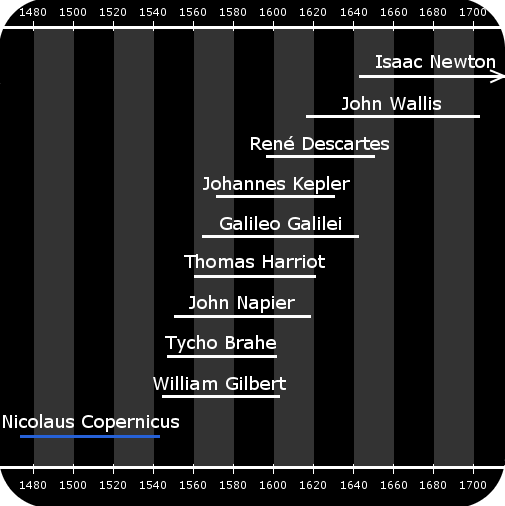
Copernicus’s lifetime and the lifetimes of related scientists and mathematicians.
Italy Revisited
Copernicus told his uncle that he could get medical training in Italy, which would be useful in Warmia, and he could complete his law doctorate.Perhaps he was also thinking that the skies above Italy were clearer than above Warmia – much better for sky watching!
He was granted two years’ further leave from his position as canon.
And so Copernicus headed south again, this time to the Italian city of Padua.
Once there, of course, he continued to study those things he was most interested in: astronomy and mathematics.
In addition to studying the things he was not meant to, this time he actually did do the work he was meant to. He studied medicine successfully and also managed to pass his exams to qualify as a Doctor of Law.
He returned to Warmia permanently in 1503. He was 30 years old.
Copernicus the Astronomer & his Heliocentric Solar System
From the year 1503 onwards, Copernicus acted as a secretary and physician for his uncle; he also performed religious duties, carried out government work, acted as an economist, and even assumed leadership in a time of war.We shall devote no more time to these activities, because what we’re really interested in are his contributions to science. It’s safe to say his time for science was limited because of his many other duties.
Discovering Flaws in Current Astronomy
During his time in Bologna, Copernicus had become friends with the experienced Italian astronomer Domenico Maria Novara. They had carried out many hours of observations of the night sky together, with Copernicus serving an informal astronomy apprenticeship.It’s worth reminding ourselves that astronomers in those days worked with the naked eye. Galileo Galilei was the first person to look at the heavens with a telescope, and Galileo wasn’t born until Copernicus had been dead for over 20 years.
One of the books in Copernicus’s collection was Summary of Ptolemy’s Almagest by Johannes Regiomontanus. Ptolemy’s Almagest, which had been written in Greek, had been the final word in all matters astronomical for over 1,300 years. Copies of the Almagest had come to Europe from the Arab world. Astronomers like Johannes Regiomontanus suspected errors had crept in when translations had been made from Ptolemy’s Greek into Arabic and then from Arabic into Latin, the language of educated Europeans.
For example, Ptolemy’s work seemed to demand that every month the moon’s distance from the earth should vary by a factor of two. Yet that would mean every month the moon would appear to change in size by a factor of two, growing, then shrinking again. Nobody had ever seen this happen, so something had to be wrong – Regiomontanus thought the translators had made mistakes.
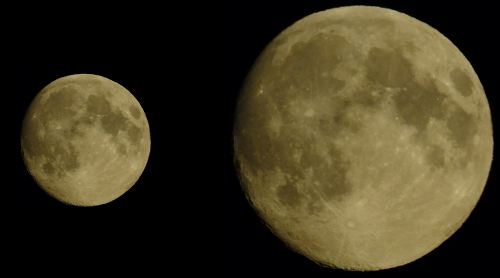
The moon’s size in the sky does not change by a factor of two each month.
It turned out that the errors were actually present in Ptolemy’s original work.
And now Copernicus gathered his thoughts:
• He had read Regiomontanus, who showed Ptolemy had made errors.
• He had observed and discussed the heavens with Domenico Maria Novara, who told him Ptolemy had made errors.
• He had also heard the opinions of other Italian academics, such as Alessandro Achillini, who had written a book casting doubt on Ptolemy’s work.
If Ptolemy could be wrong about something as basic as the moon’s orbit, then maybe he’d messed up other stuff too. Everything in astronomy could be up for grabs!
For example, Ptolemy had said Earth was at the center of the universe – the so-called geocentric doctrine. Could that be wrong too?
It was clear to Copernicus that Ptolemy was not the final word in astronomy. One day, perhaps he could add some words of his own.
Ptolemy’s Universe
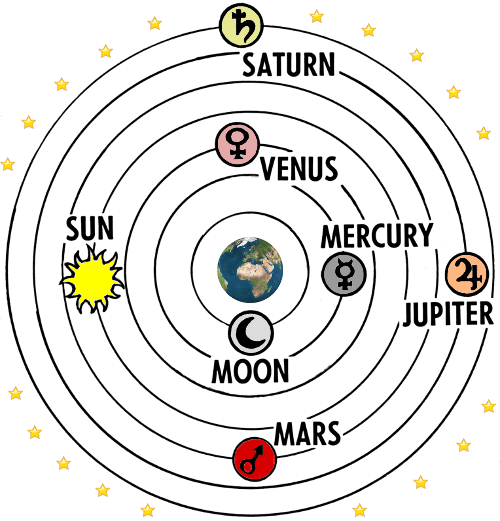
Claudius Ptolemy’s Universe: Earth is placed at the center. The sun is one of the bodies orbiting Earth. Ptolemy placed Earth in a privileged location, at the center of the universe. He would also have placed the Mediterranean Sea in a privileged location, at the center of the world. Mediterranean means middle of the land in Latin. The Greeks called it Mesogeios, meaning the same.
The Heliocentric Universe
Back in Warmia, in 1503, Copernicus worked on astronomy when he could, but he was usually busy with other duties.Nevertheless, by 1514, he had seen enough in the sky and thought enough about his observations to circulate a few pages with the title Commentariolus – The Little Commentary – to people he trusted.
In this hand-written document he put forward his new view of the universe. He thought people should shift from a geocentric (earth centered) view to a heliocentric (sun centered) view.
He took as the basic starting points of his theory:
• The earth is not the center of the universe.
• The center of the universe is near the sun.
• The earth-sun distance is negligible compared to the distance to the stars.
• Earth’s rotation on its own axis accounts for the apparent daily rotation of the stars.
• The apparent annual cycle of movements of the sun is seen because the earth is orbiting it.
• The apparent retrograde motion of the planets is caused by the fact we observe them from a moving location, because the earth is orbiting the sun.
With these starting points, he had relegated our planet from a special, highly privileged position at the center of the universe, to nothing very special – another planet moving around the sun. This was potentially dangerous, because a lot of people held the view that:
• passages in the Bible imply that the earth does not move
• the Bible is the word of God
• the penalty for disagreeing with God is death
Of this type of thinking Copernicus would later write:
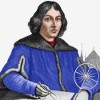 There may be babblers, wholly ignorant of mathematics, who dare to condemn my hypothesis, upon the authority of some part of the Bible twisted to suit their purpose. I value them not, and scorn their unfounded judgment.
There may be babblers, wholly ignorant of mathematics, who dare to condemn my hypothesis, upon the authority of some part of the Bible twisted to suit their purpose. I value them not, and scorn their unfounded judgment.
Nicolaus Copernicus, 1473 – 1543
On the other hand, in those days it was best not to broadcast your heretical beliefs too widely, not if you valued your life – even if you did ‘scorn the judgment’ of the people who were burning you at the stake!
Copernicus has Everything he Needs to Start the Scientific Revolution
By 1532 Copernicus had made all of the observations and applied all of the mathematics he needed to identify Earth’s place in the universe. And he had finished writing the first manuscript of his groundbreaking book De revolutionibus orbium coelestium – The Revolutions of the Celestial Spheres.He did not publish it, though, because he was worried about the reception it would get. He showed it to close friends and associates, and word began to leak out that Copernicus had a theory that the earth and the planets orbit the sun. The Pope heard about it, and Archbishops heard about it, but at this stage people just wanted to hear more about it – nobody came after Copernicus to burn him at the stake.
By 1539, seven more years had passed and Copernicus had still not published.
This changed when Georg Joachim Rheticus, a German mathematician, came to learn everything he could from Copernicus.
Rheticus studied with Copernicus for two years. He read De Revolutionibus Orbium Coelestium and was incredibly enthusiastic about it. He thought Copernicus owed it to the world to publish it.
Rheticus also helped Copernicus by bringing him new books about mathematics, which helped with Copernicus’s final calculations for the movements of the heavenly bodies.
Meanwhile, Copernicus allowed Rheticus to publish a book called Narratio prima – The First Report, in which Rheticus gave a basic summary of Copernicus’s heliocentric theory.
Again, no mobs gathered demanding death to the heretics.
And so Copernicus gave the manuscript of his book to Rheticus to be printed in Germany.
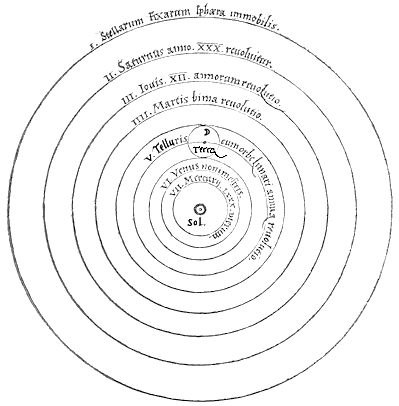
Taken from the book that started the Scientific Revolution – De Revolutionibus Orbium Coelestium. Nicolaus Copernicus correctly identified that Terra (the earth) is one of the planets orbiting Sol (the sun). Only the moon orbits Earth. Copernicus also shows the planets in the correct order. Compare this with Ptolemy’s system, shown previously, in which Earth is wrongly shown closer to Mercury than Venus. In Copernicus’s diagram the outer circle represents the stars. Then moving inward, there’s Saturn, Jupiter, Mars, Earth (with the moon), Venus, Mercury and Sol.
An Unauthorized Addition to Copernicus’s Book
The printing turned out to be a source of great anger to Rheticus and Copernicus.The printing was supervised by Andreas Osiander, who added a note at the beginning of the book which said that, even though the book’s theory was unusual, if it helped people do astronomy calculations, it didn’t matter if it wasn’t really true.
Although Rheticus and Copernicus were deeply unhappy with Osiander’s unauthorized note, there’s every chance that the book was only allowed to begin circulating because of it. Osiander had given the church an excuse not to immediately condemn the book as heretical.
The book finally emerged from the printing presses shortly before Copernicus’s death in 1543. Copernicus, diplomatically, dedicated his book to the Pope.
Another factor that saved the book from immediate suppression is that it was so mathematically difficult that only highly educated people could read it, most of whom were less likely to start ranting on street corners than others might have been.
 Finally we shall place the sun at the center of the Universe. All this is suggested by the systematic procession of events and the harmony of the whole universe, if only we face the facts, as they say, ‘with both eyes open.’
Finally we shall place the sun at the center of the Universe. All this is suggested by the systematic procession of events and the harmony of the whole universe, if only we face the facts, as they say, ‘with both eyes open.’
Nicolaus Copernicus, 1473 – 1543
Reaction to Copernicus’s Book
The general feeling among astronomers who read and understood all of Copernicus’s book – the observations and the mathematics – was that this was the best book on astronomy for 1,300 years. It was the equal of Ptolemy’s Almagest – and that was very high praise indeed.Copernicus’s theory that the planets move around the sun in circular orbits removed a number of problems caused by Ptolemy’s geocentric theory. In particular, Copernicus removed the need for the equant – a very awkward mathematical device required to make Ptolemy’s geocentric theory work.
With the benefit of hindsight, we can also see today that Copernicus’s approach enabled him to be the first person to establish the correct ordering of the solar system’s planets. Ptolemy had wrongly placed Earth closer to Mercury than Venus.
Unfortunately, Copernicus’s theory was not a perfect description of the planets’ movements. Although he was correct that the planets orbit the sun, he was wrong in saying that they follow circular paths. This error led, like Ptolemy’s system, to some awkward mathematical compromises.
And so astronomers used Copernicus’s methods where they found them helpful, but most saw little need to abandon their basic geocentric views.
Gradually, however, acceptance of Copernicus’s heliocentric theory spread, and with it a scientific revolution – particularly in the hands of Galileo Galilei and Johannes Kepler.
Kepler, building on Copernicus’s work, showed that the solar system is indeed heliocentric, but the planets do not follow circular orbits; their orbits are elliptical.
Unusually, disapproval of Copernicus – who was now dead – united both Catholic and Protestant Church leaders, although as time passed Catholic disapproval increased, while Protestant disapproval decreased.
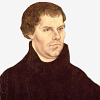 This fool wishes to reverse the entire science of astronomy; but sacred Scripture tells us [Joshua 10:13] that Joshua commanded the sun to stand still, and not the earth.
This fool wishes to reverse the entire science of astronomy; but sacred Scripture tells us [Joshua 10:13] that Joshua commanded the sun to stand still, and not the earth.
Martin Luther, Protestant Theologian, 1539
In 1620 the Church approved Copernicus’s book after editing it: any sentences in which Copernicus wrote about a moving Earth and a central Sun as a matter of fact were removed or changed. Despite the final approval, the book was still not actually published in any countries with a powerful Catholic Church.
Nevertheless, support for Copernicus continued to grow, and his ideas triumphed over those of his opponents. It was a victory for evidence-based, observational science, interpreted using the language of nature – mathematics.
Aristrachus
Almost two millennia before Copernicus published his theory of a heliocentric universe, the ancient Greek astronomer Aristarchus published the first heliocentric universe theory. You can read that fascinating story here.We all agree the solar system is heliocentric, don’t we?
Amazingly, despite it being clear for centuries that our solar system is heliocentric, opinion polls in countries including Germany, the United States, and the United Kingdom show about 1-in-5 or 1-in-6 people still believe that the sun orbits the earth!The End
Nicolaus Copernicus died at the age of 70, on May 24, 1543 of a stroke. He had not married and had no children. He had devoted his life to science, the church, and government.He was buried in Frombork Cathedral, Poland, where he had been Canon. His grave was lost for centuries, but found again in 2005. In 2010 his remains were reburied in Frombork Cathedral in the same spot as they were discovered. His new tombstone shows a golden sun with six planets orbiting it.
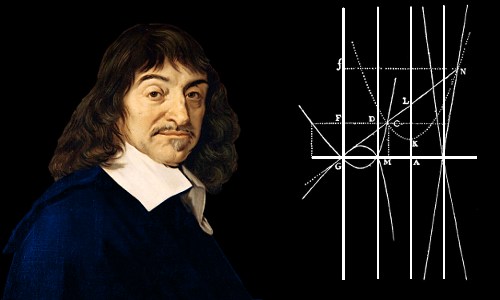
No comments:
Post a Comment